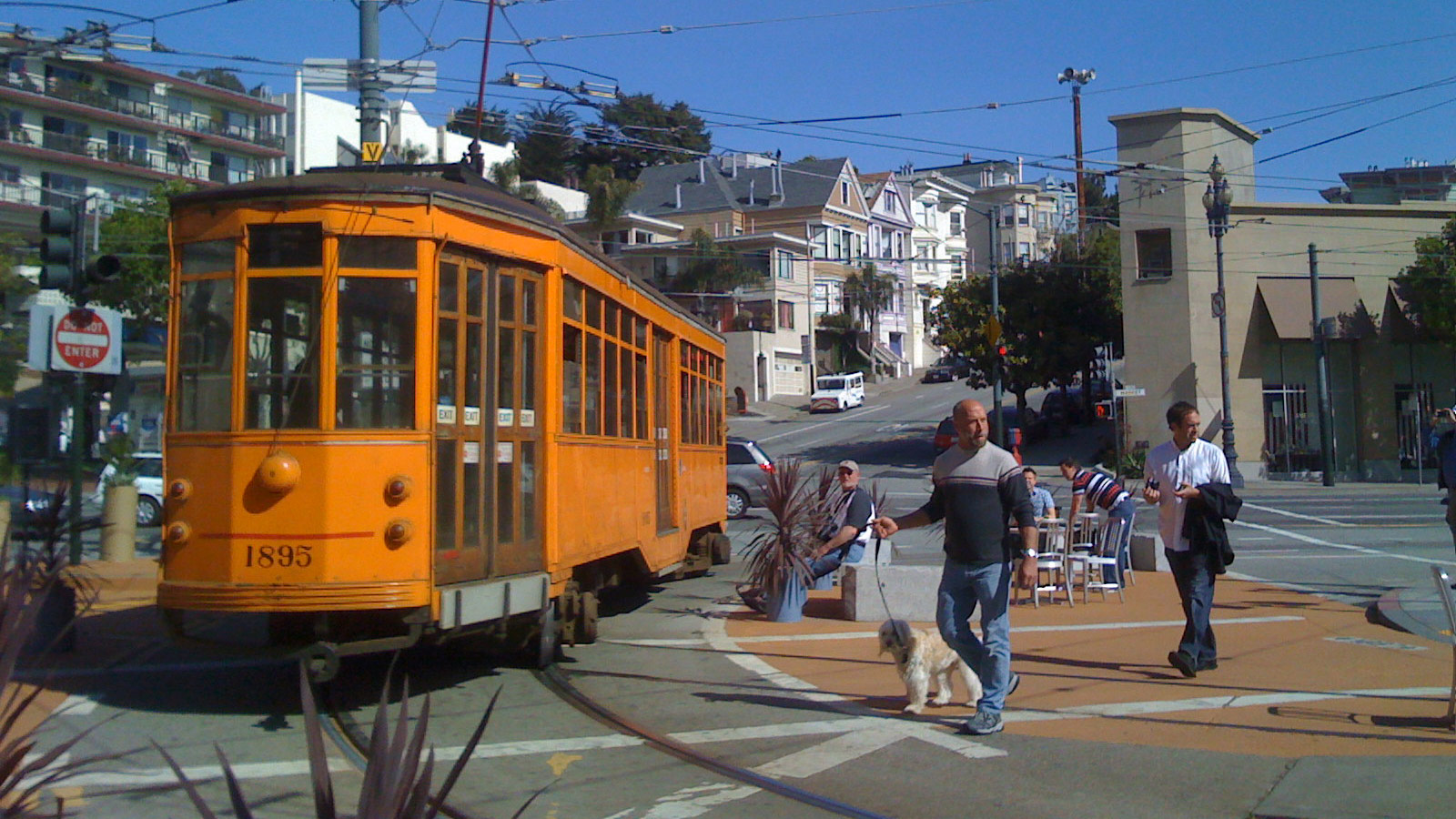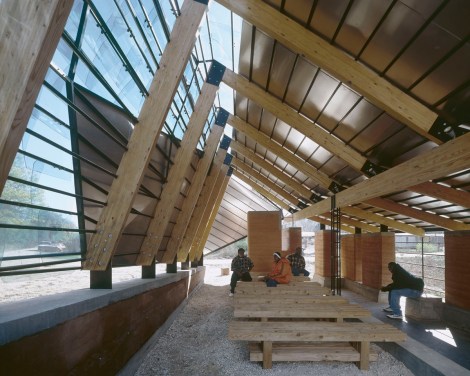Kids today — they may not have much in the way of job opportunities, but, as all those resume-padding trips to build Guatemalan orphanages attest, they’ve got plenty of idealism. Still, as architect Steve Badanes points out, it’s all too easy to “walk past a guy living in a box on the way to the airport to save the planet.”
Enter community architecture, a process designed to connect architecture students with the people and communities around them — and bring good design to problems, people, and places that wouldn’t be able to afford the high-priced field without it.
Community architecture programs are a variation on the design/build model in which students develop designs in consultation with clients and then provide the hands-on labor to turn their own plans into reality. It’s a notable departure from old-school architectural programs where students spend their lives in studio classrooms drafting and building models, and are evaluated on aesthetics, rather than considerations like livability and sustainability.
Badanes teaches community architecture at the University of Washington, but programs exist across the country, from Texas to Kansas to Yale. The granddaddy of all design/build programs is the Rural Studio, at Alabama’s Auburn University, where two decades’ worth of undergraduates have built everything from homes to parks to community centers in impoverished Hale County.
Badanes used to take students to Mexico for projects, but quickly came to realize that staying in Seattle was a much more potent way to connect students with people who needed their help. Many of the interventions Badanes has led are fairly small-scale: Sheds and barns for urban farms, play areas in parks and schools, and the ever-popular bus shelter have all made multiple appearances.
They may not be providing housing for millions, but such projects have a significant impact on the host communities, most of which can’t afford quality design solutions.
In one of the Rural Studio’s better-known projects, for example, students built a one-room, non-denominational chapel with an undulating glass skin — made entirely of discarded car windshields. The ingenious design not only repurposes what would otherwise be landfill, but it also gives residents a dignified and beautiful spot to pray and to serve meals to children throughout the summer; the chapel is inside the community center, which also includes a mobile library and a mobile health center.
Design/build programs also take on questions of sustainability in architecture — and not only in the narrow, environmental sense. As Badanes describes, though his students utilize sustainable materials and technologies like rain catchment, the most crucial step toward truly sustainable work is in the project selection phase — which is to say, it’s important to design something that’s actually needed, rather than something that simply looks cool. Many projects might sound interesting or feasible on paper but lack a coherent plan for maintenance after completion — not a typical architectural consideration, but one that’s necessary for genuine sustainability.
Andrew Freear, director of the Rural Studio, echoes the point: He believes in remaking existing buildings “to reinforce those buildings’ importance to the collective memory of the community” — using fewer materials and less energy than new construction, certainly, but also strengthening the bonds between people and place, and revitalizing what’s already there, rather than starting from scratch.
Students, too, come away from their experience with a different notion of community and collaboration than most. Not only do they gain experience in working with classmates as a team, with much more than just a grade on the line, but they also interact with stakeholders ranging from low-income clients to city or county officials and the many local businesses supplying materials or other support to the project.
Prior to teaching, Badanes was a member of the Jersey Devil architecture group, a “band of gypsies living in trailers” who designed and built avant-garde works for paying clients, and in our interview he was quick to point out that in architectural practice outside of the academy, design/build work “is not necessarily associated with altruistic causes.”
Even the Rural Studio readily admits that most of its students don’t continue their altruistic trajectory: “The majority of our graduates follow a typical professional path simply because those jobs exist,” Freear told me.
One organization, San Francisco-based Public Architecture aims to change that. It asks conventional architecture firms to donate one percent of their design services to public-service projects. It’s based on a similar structure in law, wherein major legal firms give one percent of their time to pro bono work.
Public Architecture has engaged brand-name design practices alongside institutional stakeholders as powerful as the University of Texas in projects ranging from parks to housing to (once again) bus shelters. In San Francisco’s well-trodden Castro district, Public Architecture led the design of a pedestrian plaza which recaptured some of the streetscape for pedestrian use, a move that has proven enormously popular with both tourists and residents, and which the organization sees as part of a larger, nationwide effort to make cityscapes less car-centric and more focused on people. Here’s a short video from StreetFilms on the project:
John Peterson, founder of Public Architecture, speaks of his efforts as a “multi-generational game” to transform mainstream architectural practice. Previous generations thought of social responsibility as something that “muddied the clarity” of design; architecture was seen as a form of art, not public service, he says.
Questions of social responsibility in architecture have a long history of dialog and discussion, however — and if professors like Steve Badanes have anything to say about it, Millennial-generation architects just might be the ones to push these ideas out into the world. Students who go through design/build programs enter their careers not just hungry to make a difference, but empowered by their experience of already having done so.




